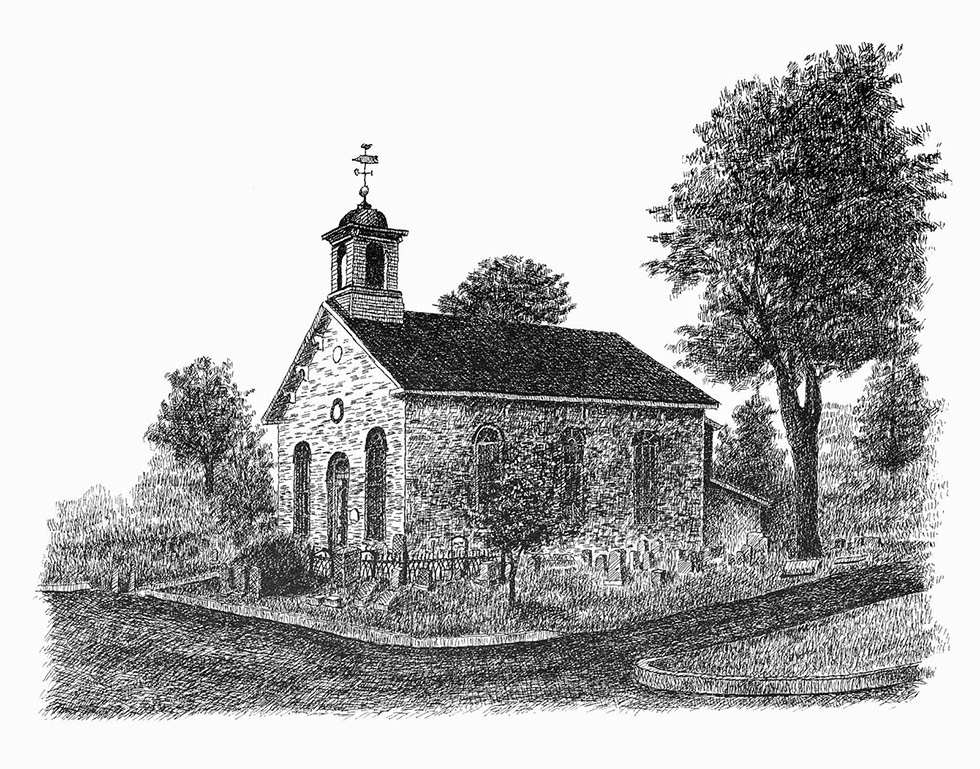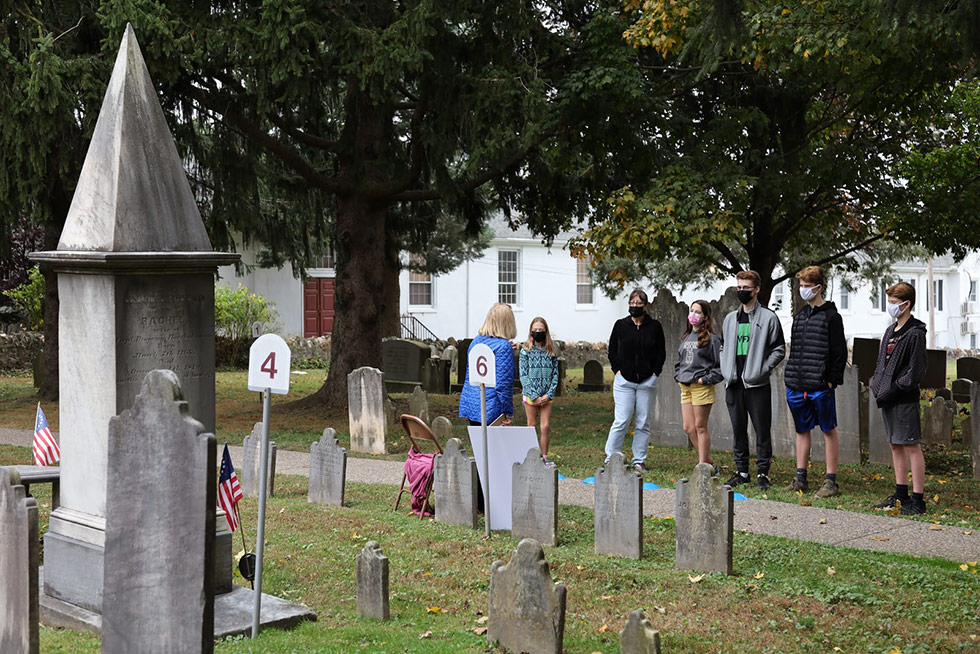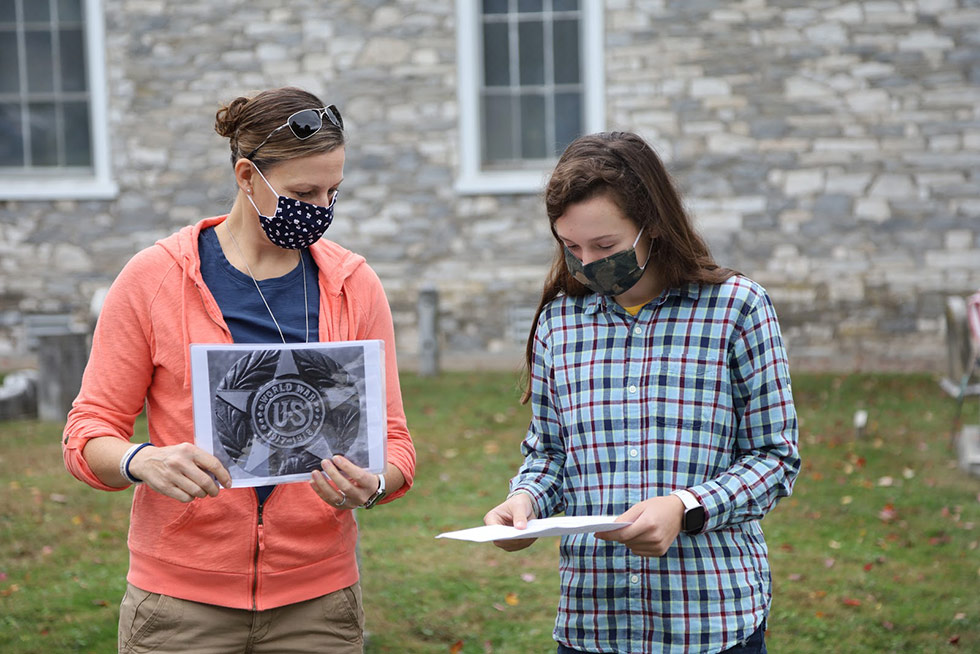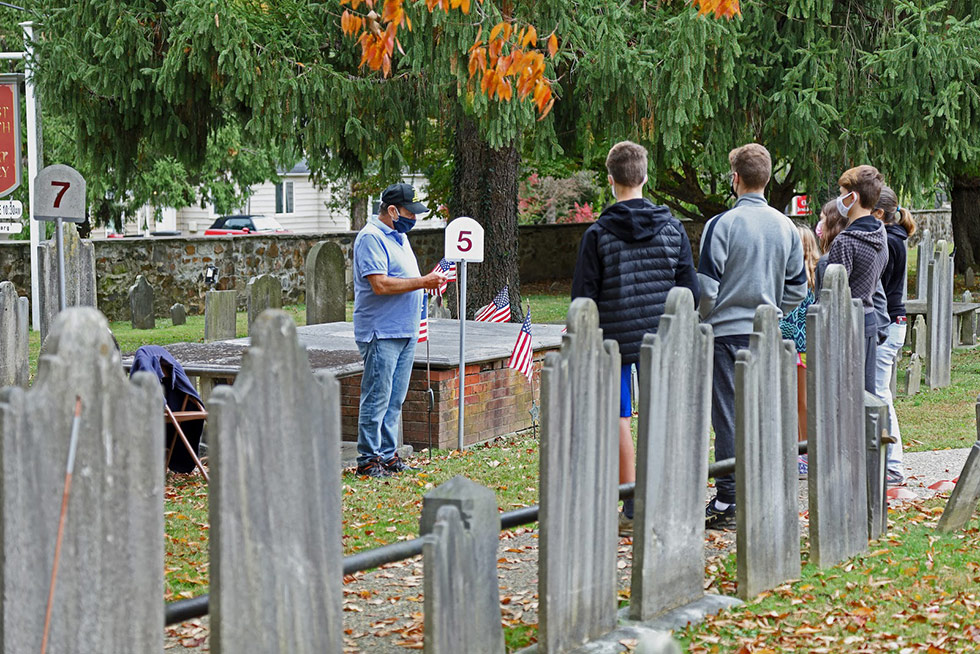Explore 300 Years
Founded by sixteen Welsh Baptists on April 22, 1711, we are proud of our more than 300 years of continuous Christian service in this community. We worship and study on ground rich in American history. While we strive to revere and learn from the past, we endeavor to have a creative program that meets the needs of the present.
A Historical Narrative of BCGV
Excerpted from A Social History of the Baptist Church in the Great Valley by Harold L. Twiss. The paper draws upon the church records, wills and probate inventories, United States Census records and other sources. A graduate of Eastern Baptist Theological Seminary and the University of Pennsylvania, Mr. Twiss worked for many years as an editor of religious books. © Copyright Harold L. Twiss, 1998.
The American Revolution
The Baptist Church in the Great Valley could not help but be involved in the American Revolution that swept past its doors. David Parry, a member of the church, was a Captain in the Associates Regiment, which was organized for home defense by royal decree after the defeat of the British and colonial forces at Fort Duquesne (Pittsburgh) on August 9, 1746. In 1758 an expedition under the leadership of General Forbes to retake Fort Duquesne included Joseph Mitchell, whose wife Ann was a member of Great Valley. He was paid three pounds and fifteen shillings for hauling baggage from Ft. Loudon to Ft. Bedford and twenty-seven pounds for hauling goods from Carlisle to Bedford.
When the Continental Congress called for a day of prayer and fasting on July 20, 1775, David Jones, then pastor of Great Valley, was invited to preach to a gathering of the troops. He had come to the church from Crosswicks, New Jersey, where his support of the cause of American Independence had aroused a great deal of opposition from loyalists. More than 3000 men gathered at the church, along with members of the congregation and other spectators. Drawing upon the text of Nehemiah 4:14 calling the Jewish people to defend homes and families, Jones argued that to fight for their liberty was honorable in the sight of God. The Pennsylvania Gazette of August 16, 1775, announced the publication of his sermon, “Defensive War in a Just Cause Sinless,” and its availability at nine pence from booksellers in Philadelphia, Lancaster, and Burlington. In 1776, David Jones offered his services as a chaplain to the army and was assigned to the Fourth Pennsylvania Battalion under Anthony Wayne.
The area around Great Valley was the center of fighting in the fall of 1777. After the Battle of Brandywine, from September 18 to 21, the British army camped in the area southwest of the intersection of Swedesford and Baptist Roads and General Howe made his headquarters in the home of Samuel Jones, a deacon in the Great Valley church. Samuel’s son Nathaniel was captured by the British when he attempted to cross through the lines. When the American army was routed at Paoli, David Jones, then serving as a chaplain, escaped injury or capture. Washington’s army, after failing to defeat the British at Whitemarsh and Germantown, withdrew to Valley Forge for the winter. The house built by Morris Edwards, a founding member of the Great Valley church, and occupied by his daughter and her husband, was used by General Varnum for his quarters during the encampment. While David Jones was with the army at Valley Forge, he used his home as a base to gather supplies from the surrounding area for the beleaguered troops in the encampment. Griffith Jones, the grandson of Griffith John, an elder in the church, died of camp fever while at Valley Forge in 1778. During their advance, the British troops plundered the countryside. The list of claims for loss includes a claim from the Baptist Church in the Great Valley for communion ware, baptismal garb and sexton’s tools for a total of six pounds, eight shillings, ten pence. Nevertheless, the Baptist Church in the Great Valley survived the trials of wartime, and in 1805 built the stone meeting house the still serves the church.
The Anti-Slavery Movement
The pastorate of Leonard Fletcher at the Baptist Church in the Great Valley from 1832 to 1840 is evidence that evangelistic activity is not antithetical to a strong concern for social action. Under his leadership more people joined the Baptist Church in the Great Valley than during any other decade of its history. One hundred eighty-six people joined during Fletcher’s first year as pastor and one hundred one in his second year. Altogether, he baptized more than four hundred people in the eight years he served the church.
At the same time, Fletcher was also a key person in the formation of the Wilburforce Anti-Slavery Society. He made the motion for the organization of the Society at a meeting in the Glassley School. The list of constituent members included John and Deborah Beaver, John Jones, Hannah P. Jones, and George Phillips as well as Fletcher from the Great Valley church.
Unfortunately, not all in the church shared their sentiments. In July of 1837 a trustee of the church, Joshua Jones, refused the Wilburforce Society the use of a school room in his house but the society was offered the use of the school house on the grounds of the church. When some members of the church objected to this use of the school house, the meetings were held outside until Jones granted the use of his house for the meetings in September. In November of 1839 the Baptist school house and meeting house were again opened to the Society, but the church was still divided over the issue. The church denied a salary increase for Fletcher and he resigned as pastor. Some of the members of the church then withdrew to form, along with others, the Radnor Baptist Meeting on Conestoga Road in Radnor on February 20, 1841.
The Wilburforce Society then met in the building used by the Radnor church, formerly known as the Radnor Scientific and Musical Hall. The building itself was controversial and had a reputation as a “temple of free thought and infidelity.” William Siter, its builder, who had recently been converted in the Baptist Church in the Great Valley where his wife was a member, conveyed the title to the hall to the newly organized Baptist church. One of the early guest speakers in the Radnor church was Frederick Douglass, an escaped slave and an outspoken advocate of abolition. An article in the June 9, 1860, issue of The Jeffersonian of West Chester cited a report from the Radnor church that the church had borne a strong witness against slavery.
Whatever its position on abolition, the Baptist Church in the Great Valley was open to the participation of African-Americans within its membership. The membership records note the accession of several members “of color” beginning with Harry Coats in 1762. Ten joined the church during Fletcher’s pastorate. At least two of them, Mary Ann and Jane Small, were dismissed to join the Radnor church in 1841. Earlier, in 1819, Isaac Alexander had been dismissed to participate in the colonization program in Africa that led to the foundation of the nation of Liberia. The gravestone for Phyllis Burr in the Great Valley Baptist Cemetery reads, “Erected by the Great Valley Baptist Church, in memory of Phyllis Burr, who was born in Africa, brought to America in the Slave Ship \’Ganges\’ and sold into slavery to pay for her passage and died April 18, 1872, aged nearly 100 years.”
Post-WWII History
As World War II ended in 1945, congregants of Baptist Church in the Great Valley faced a choice: Continue to worship in two locations or consolidate into a single location to witness more effectively to its community.
For a number of years, the church had followed a winter/summer rotation. Congregants met in its historic meeting House on North Valley Forge Road only in the summer — because that building, built well over a century before, had an unsatisfactory heating system — and convene during the winter at a smaller facility known as the Berwyn Chapel in Berwyn about six miles away.
The congregation, led by its Pastor the Reverend Samuel E. Smith, sensed — or was led by the Spirit — to believe that the land around the Meeting House would soon come alive with new housing developments, making it a fertile field for numerical and spiritual growth. Under Rev. Smith’s pastorate, the congregation in 1949 determined to sell the winter church in Berwyn and its parsonage and concentrate activities in the property that had been the core of the church for 200 years.
Following a successful fund campaign, the Meeting House was renovated in 1949 with new lights and a new central heating system. In 1953 the church called the Rev. Chester T. Winters as its pastor, and for the next 37 years under his leadership the church enhanced its witness to the Great Valley.
In 1953 construction began on a new Church School Building and an adjoining parsonage on vacant land north of the cemetery. The new Parsonage was occupied January 1, 1954 and the William Maxwell Scott Church School Building, named for the couple whose generous gifts help fund construction, opened September 18, 1954. Classrooms and offices were added to the Scott Building in 1959, doubling the size of the Church School facilities.
While these expansions unfolded, the nearby Chesterbrook Farm, less than a mile away, was on its way to becoming the major housing development church fathers had envisioned. Once home of champion racehorses and cattle on its 516 acres, Chesterbrok Farm effectively ceased operations in July 1962 when Eleanor Cassatt Laird, its owner, died.
By that time the Pennsylvania Turnpike had sliced through the farm’s northern fields and plans for cutting through the south farmland with a relocation of Route 202 were underway. The farm buildings and implements were auctioned in 1965 and Richard Fox, a local developer, bought the farm for $2.3 million in 1969.
After a six year legal fight, construction began on the first homes in Chesterbrook in November 1977. Today Chesterbrook is home to an estimated 5,200 persons living in 2,314 housing units sited in 28 villages. And as envisioned, Chesterbrook has provided BCGV with a number of stalwart members.
During Chesterbrook’s gestation, the Meeting House was improved with a new Moeller “Double Artiste” pipe organ, installed in 1958. A renovation in 1970 added the graceful weathervane and bell to the steeple, choir dressing rooms and modern restrooms, and a balcony increasing seating capacity by 50 to a total 250. In 1990 the Meeting House was air conditioned.
In 2010 the congregation approved modernization and expansion of the Scott Church School Building to upgrade its heating, air conditioning and electrical systems; improve accessibility by installing an elevator and accessible bathrooms; and modernize the Church School classrooms and public spaces. Construction is expected to begin in autumn of 2010 and be completed in 2011.
Effective witness requires effective facilities. The Baptist Church in the Great Valley’s decision in 1949 to focus its energies and resources in the Great Valley has borne fruit and will be our pathway to the future.
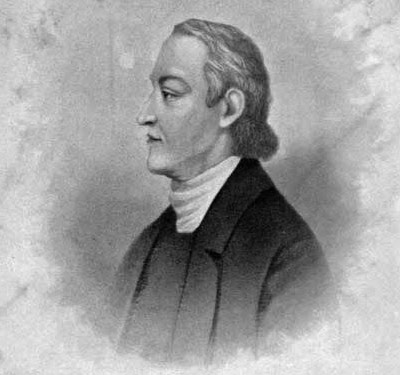
The Reverend David Jones was pastor during the American Revolution and was well known for his great patriotism and ability to “rouse the spirit” of the Continental Army. He was distinguished as chaplain to General “Mad Anthony” Wayne during the Revolutionary War and narrowly escaped death at the “Paoli Massacre.” Also a trained doctor, he performed surgery as needed and helped in gathering supplies for the Valley Forge encampment. An outspoken leader among Baptists of his time, he served as pastor in our church from 1775 to 1786 and from 1793 to 1820. During his long career, he led pioneering and unpopular missionary journeys to preach to American Indians. His notable sermon, “Defensive War in a Just Cause Sinless”, preached that the fight for liberty was honorable in the sight of God and that the “defensive” American Revolution was a “just cause” permitting Christians to forsake anti-war beliefs and take up arms against a divinely-instituted King. At age 76, Rev. Jones left the church to serve as a chaplain with the army in the War of 1812. Rev. Jones is buried in our cemetery.
The Reverend Leonard Fletcher was pastor from 1832 to 1840. During this time, he baptized more than 400 people, started several of our eight daughter churches, and formed the Wilberforce anti-slavery societies for Tredyffrin Township and Chester County. Rev. Fletcher is buried in our cemetery.
Rachel Cleaver was a laywoman who, with her husband Isaac and five other members***, left the church in 1821 to become a medical missionary team to the Cherokee Indians in Tennessee. Members of this early missionary team taught trades such as blacksmithing and life skills to the Indians at a time when anti-Indian sentiment was rising in the nation. In 1830 Congress passed the Indian Removal Act under which four Indian tribes including the Cherokee were relocated by forced marches to Oklahoma, freeing 25 million acres in the southeast for settlement. This “Trail of Tears” resulted in the deaths of about 4,000 out of 15,000 Cherokee marchers. Mrs. Cleaver died in 1836 and is buried in the church cemetery.
The Reverend Doctor Joseph Sagebeer was pastor from 1904 to 1926. He led the church during a time of transition and established a liberal open tradition that has survived to the present. He is buried in the church cemetery.
The Reverend William T. Vandever served as pastor from 1929 to 1935. Rev. Vandever dealt with a lull in membership that followed Dr. Sagebeer’s long ministry and made young people the largest group in the church. He baptized many of today’s elder members.
The Reverend Samuel E. Smith, pastor from 1945 to 1951, established new leadership after World War II and convinced the members to adopt our first by-laws. Predicting correctly that the estates around the old Meeting House would soon become housing developments, he convinced the congregation to sell the winter church and parsonage in Berwyn and move back to our current location, the property that had been the center of the church 200 years earlier.
The Reverend Chester T. Winters was pastor from 1953 to 1990. Rev. Winters led the congregation as we made the move and reached out to our new neighbors near the old Meeting House. An excellent public speaker and historian, his messages and personality were well-received by the developing community. Attendance at worship services grew and as a result, a balcony was added in the meeting house during renovations in 1970. During Rev. Winters’ ministry, the William Maxwell Scott Church School Building and a parsonage on North Valley Forge Road were built. Many current members fondly remember his visits and his birthday letters. Rev. Winters retired because of poor health and was honored as Pastor Emeritus shortly after his retirement. He remained in the church community until his death in 1994, and members of his family remain active in congregational life today. Rev. Winters is buried in the church cemetery.

